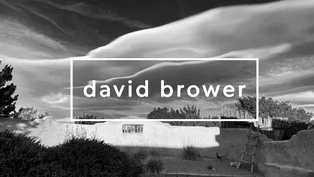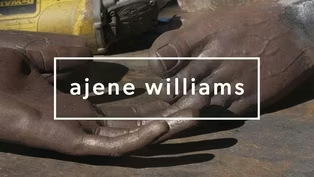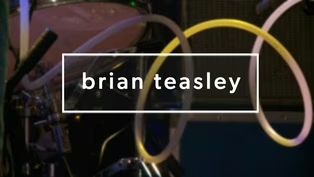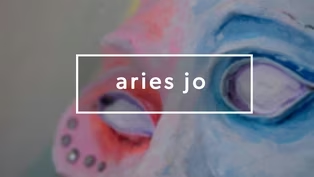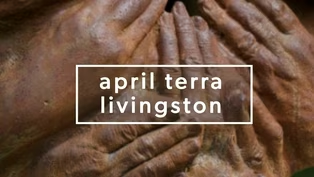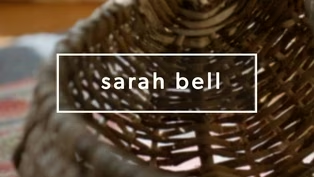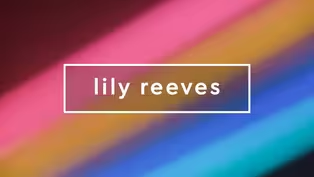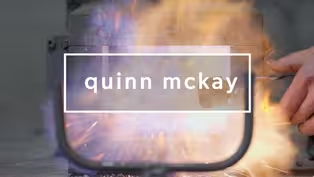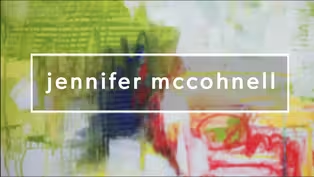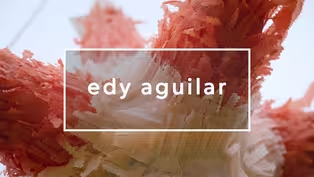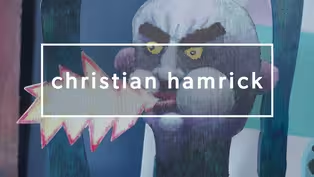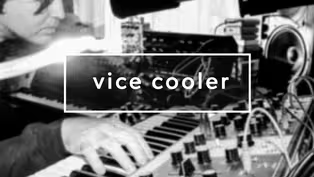Monograph
Sarah Bell
Clip: Season 7 | 8m 43sVideo has Closed Captions
Sarah Bell creates intuitive, woven art that captures the essence of place and season.
Sarah Bell's path from farming to basket weaving reflects her deep connection to the natural world. Working the land evolved into harvesting materials from her surroundings, transforming them into distinctive woven art that captures the essence of place and season. Each basket emerges from this meditative process, where her hands let the materials (oak, kudzu, vine) guide her.
Problems playing video? | Closed Captioning Feedback
Problems playing video? | Closed Captioning Feedback
Monograph is a local public television program presented by APT
Monograph
Sarah Bell
Clip: Season 7 | 8m 43sVideo has Closed Captions
Sarah Bell's path from farming to basket weaving reflects her deep connection to the natural world. Working the land evolved into harvesting materials from her surroundings, transforming them into distinctive woven art that captures the essence of place and season. Each basket emerges from this meditative process, where her hands let the materials (oak, kudzu, vine) guide her.
Problems playing video? | Closed Captioning Feedback
How to Watch Monograph
Monograph is available to stream on pbs.org and the free PBS App, available on iPhone, Apple TV, Android TV, Android smartphones, Amazon Fire TV, Amazon Fire Tablet, Roku, Samsung Smart TV, and Vizio.
Providing Support for PBS.org
Learn Moreabout PBS online sponsorship(calm music) Natural materials are so expressive of their own.
And so like that's why I am always kind of saying that they're more of a collaborator than like, me sort of imposing my will on them.
(calm music continues) I didn't go to art school, never been surrounded by like art, artists, or an art community.
So I was like really struggling to kind of think about like, it makes sense, you know, like in my body.
(calm music continues) Being in the South in general, it opened me up to agriculture and the history of farming here in the South.
It just kind of led me to all of these different things, different plants, and the woods, and the rivers.
And I think that led me to exploring, or like using nature as a collaborator in my work.
(calm music continues) The material is a plant, and the plants is, you know, often from the woods or from the land.
And then, when you get to know that plant, you have to know the best season to harvest it, you have to know how it grows.
You have to know like when's the best time in its growth cycle to harvest it or process it.
It's like, I feel like you just get deeper and deeper into it, and then you kind of know, like, you have to know where it grows.
You have to know the soil or the things around it or what to look for.
So it's, yeah, there's like a lot of layers.
(calm music continues) Certain materials lend themselves to those different styles.
Like the sweet grass baskets, you know, you're going to, they lend themselves to the coiling, to a coiled basket.
Or like oak, oak splints, you know, you're going to do like a twill weave because they're flat.
(calm music continues) I do a rib basketry or frame, so if you think of like an egg basket or like a potato basket, I make those a lot with kudzu.
And then I also make a lot of bark basketry.
I take a lot of inspiration from East Asian basketry styles.
I forage kudzu, wisteria, any vines.
Recently, been walking around the property looking for a good white oak to fell so that I can split it up this winter.
(calm music continues) You can make an average size basket probably in a day or less than a day once you've processed everything, which is really the longest part, is processing material.
(calm music continues) I think what is so beautiful is that communities have, as they've made a basket over and over and over again, you know, they weave in stories and designs and flare.
Something like about that design aesthetic that I think is so sweet.
(calm music continues) I started teaching three years ago.
It happened very organically.
I was very into natural dye and indigo, and I held a day workshop here at my house with like mostly friends.
And I realized how much I enjoyed being creative, like being creative in community and with other people.
(calm music continues) It's made me a better like practitioner as well, teaching.
Because it's one thing to sort of know how to do something, and then it's a whole other thing to be able to teach somebody else or like describe why you're doing what you're doing and have someone else like get it and grasp it.
(thoughtful music) It really is like such a joy.
I really love it.
And I just love being in space with people who are like, want to learn something new.
(thoughtful music continues) I've been getting really into Chinese knotwork.
(thoughtful music continues) It's also a very old folk art in Chinese culture.
They had their functional uses, but mainly it was a decorative, something decorative that they would put on, you know, basic, like a pouch or on a hairpin or something.
Often, a lot of the knots, they will symbolize something or they will look like a Chinese character.
But they're also a form of communication for blessings or well wishes.
There's like the true lovers knot that they held at ceremonies.
There's knots that you might give to someone on their birthday.
It's really hard.
(chuckles) It like takes a lot of patience, and you really have to like slow down.
(thoughtful music continues) I'm half Chinese.
And so my mom is Chinese, my dad is white, but my mom died when I was seven.
So, a lot of my creative practices, and even farming, I think there's always this like layer of like grief and healing that I think really weaves its way into, you know, why I make the art that I make and what, like, it guides me, I think, to certain things.
(thoughtful music continues) Chinese knotwork was one of those things that, you know, can make me, even though like she didn't practice Chinese knotwork, but it just like can make me feel a little bit closer to her and to that side of my family.
(thoughtful music continues) The sort of running theme for me in my art practice, there's a grappling with my identities of farmer, mother, woman, biracial, with just wanting to be.
Sometimes identities are self-imposed or externally imposed.
And sometimes you want to be free from all of that.
In the woods, in nature, being outside, touching soil, I feel like, that is a space where people can be.
Not just be as an individual, but be as in you are connected to everything.
(thoughtful music continues) And so, while I love sorting through my identities, I also love when I can, you know, just exist as I am.
And I love, yeah, like walking through the woods because there's that moment of slowness and like, being in the present.
(thoughtful music continues) (thoughtful music ending)
Video has Closed Captions
Clip: S7 | 6m 50s | Artist David Brower on his interdisciplinary creative journey. (6m 50s)
Video has Closed Captions
Clip: S7 | 5m 22s | Metal Arts, Ajene Williams transforms cold scrap metal into warm, joyful sculptures. (5m 22s)
Video has Closed Captions
Clip: S7 | 11m 49s | A life of bringing people together to make and experience music. (11m 49s)
Video has Closed Captions
Clip: S7 | 6m 28s | Using art to process grief and transform it into a life of authentic joy. (6m 28s)
Video has Closed Captions
Clip: S7 | 7m 33s | April Terra Livingston gives form to ideas through many art forms to educate the world around her. (7m 33s)
Video has Closed Captions
Clip: S7 | 8m 43s | Sarah Bell creates intuitive, woven art that captures the essence of place and season. (8m 43s)
Video has Closed Captions
Clip: S7 | 7m 10s | Birmingham native, Lily Reeves captures sculptures of light in her neon studio. (7m 10s)
Video has Closed Captions
Clip: S7 | 5m 43s | Birmingham blacksmith Quinn McKay transforms nature into elegant, functional metalwork. (5m 43s)
Video has Closed Captions
Clip: S7 | 7m 19s | Visual artist, Jenny Fine, transforms memory into visual narrative. (7m 19s)
Video has Closed Captions
Clip: S7 | 7m 58s | Alabama based conceptual artist, Jennifer McCohnell. (7m 58s)
Video has Closed Captions
Clip: S7 | 5m 36s | Piñata maker and multimedia artist, Edy Aguilar, in Northern Alabama. (5m 36s)
Video has Closed Captions
Clip: S7 | 4m 56s | Christian Hamrick's childhood home became both canvas and classroom, fostering boundless creativity. (4m 56s)
Video has Closed Captions
Clip: S7 | 6m 35s | Alabama native Vice Cooler is a multifaceted artist based in LA. (6m 35s)
Providing Support for PBS.org
Learn Moreabout PBS online sponsorshipSupport for PBS provided by:
Monograph is a local public television program presented by APT
